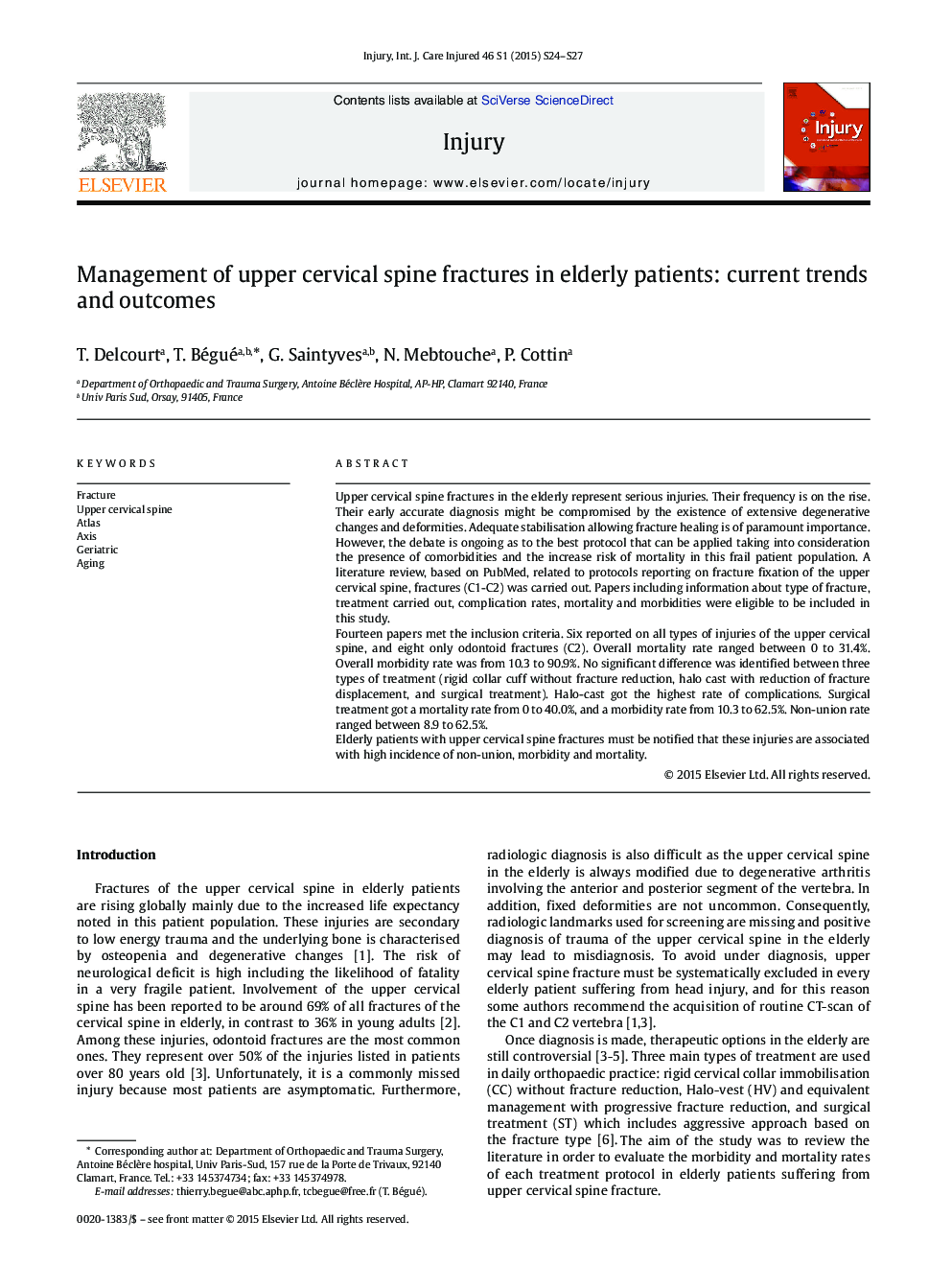| Article ID | Journal | Published Year | Pages | File Type |
|---|---|---|---|---|
| 3239390 | Injury | 2015 | 4 Pages |
Upper cervical spine fractures in the elderly represent serious injuries. Their frequency is on the rise. Their early accurate diagnosis might be compromised by the existence of extensive degenerative changes and deformities. Adequate stabilisation allowing fracture healing is of paramount importance. However, the debate is ongoing as to the best protocol that can be applied taking into consideration the presence of comorbidities and the increase risk of mortality in this frail patient population. A literature review, based on PubMed, related to protocols reporting on fracture fixation of the upper cervical spine, fractures (C1-C2) was carried out. Papers including information about type of fracture, treatment carried out, complication rates, mortality and morbidities were eligible to be included in this study.Fourteen papers met the inclusion criteria. Six reported on all types of injuries of the upper cervical spine, and eight only odontoid fractures (C2). Overall mortality rate ranged between 0 to 31.4%. Overall morbidity rate was from 10.3 to 90.9%. No significant difference was identified between three types of treatment (rigid collar cuff without fracture reduction, halo cast with reduction of fracture displacement, and surgical treatment). Halo-cast got the highest rate of complications. Surgical treatment got a mortality rate from 0 to 40.0%, and a morbidity rate from 10.3 to 62.5%. Non-union rate ranged between 8.9 to 62.5%.Elderly patients with upper cervical spine fractures must be notified that these injuries are associated with high incidence of non-union, morbidity and mortality.
